Photochemistry!
Overview of the SciencePhotochemistry is a field of science that looks at chemical reactions that involve sunlight. Sunlight is a spectrum of light that includes infrared, visible and UV rays. The UV rays are the most potent (yes the ones that sunburn you) when it comes to chemical reactions particularly during the summer months in the Arctic where the sun shines 24/7 for ~5 months. However, even though there is 24/7 hours of light, UV light is very low at night. You will not get sunburned at night since the angle of the sun is too low and the UV rays are scattered in the atmosphere and too few of them reach the Earth’s surface.
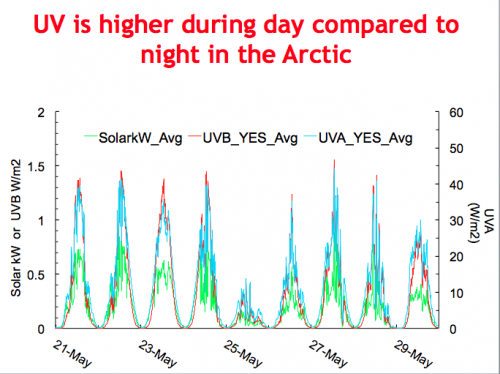 UV higher during the day compared to at night. Slide by Rose Cory.
Arctic Reactions
UV higher during the day compared to at night. Slide by Rose Cory.
Arctic Reactions
There are thousands of stagnant shallow pools of water, rivers, lakes, wetlands and streams and since they are shallow, light can permeate through the entire water column.
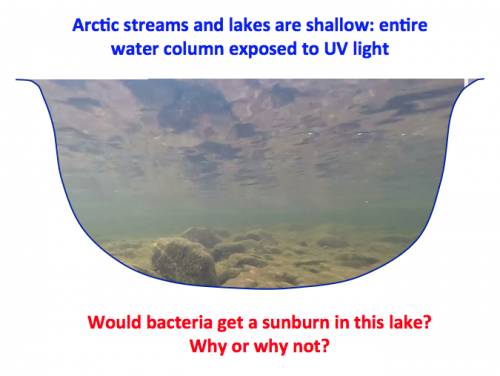 Arctic water column. Slide by Rose Cory.
Arctic water column. Slide by Rose Cory.
Imnaviat photos here:
Soil water vs. stream/lake water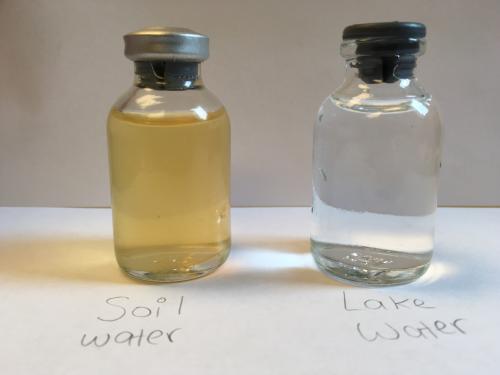 Lake vs. Soil water. Photo by DJ Kast
Lake vs. Soil water. Photo by DJ Kast
- Soil water or water filled with soil carbon is a yellow color.
- Soil carbon in the water acts as a sunscreen for the microbes and protects them from UV rays.
- Lake water is clear because the chemical reaction of adding light causes it to bleach. This process breaks down soil carbon inside of the soil water resulting in lake water that is clearer.
- The colored carbon in soil water is bleached to uncolored carbon that occurs in lakes through UV exposure. This change affects what the microbes eat; sunlight changes the chemical composition of their food.
- Bacteria like to eat soil carbon that’s been treated by the sun.
- They like it a bit baked but not burnt. If the bacteria like the carbon (the yellow soil water) then they are able to eat it and turn it into carbon dioxide.
- If the sun bakes it too much, the bacteria won’t eat, they cant deal with it and do not make it into CO2.
Important Fact
In Arctic rivers and lakes, sunlight is faster than bacteria at turning organic carbon into CO2. There are very important interactions between microbes and light here in the Arctic.
People:- PI: Dr. Rose Cory
- Lab Manager- Lija Treibergs
- PhD student: Adrianna Trusiak
- PhD student: Aislinn Deely-Iacovetta
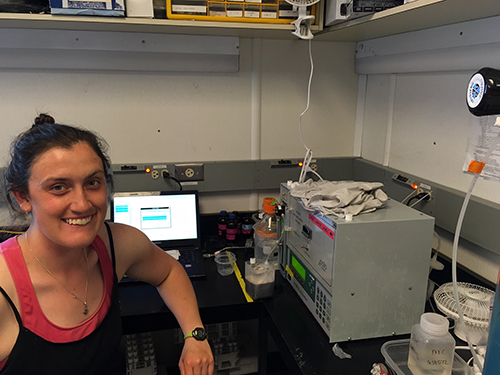 Lija Treibergs in front of the DIC. Photo by DJ Kast
How fast does sunlight bleach the yellow soil water carbon?
Lija Treibergs in front of the DIC. Photo by DJ Kast
How fast does sunlight bleach the yellow soil water carbon?
Current Experimental Setup
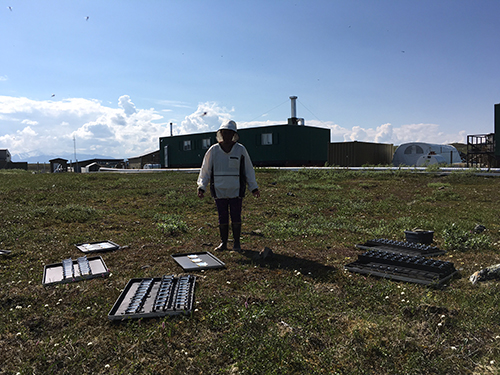 Lija Treibergs and science experiment setup. Photo by DJ Kast
Lija Treibergs and science experiment setup. Photo by DJ Kast
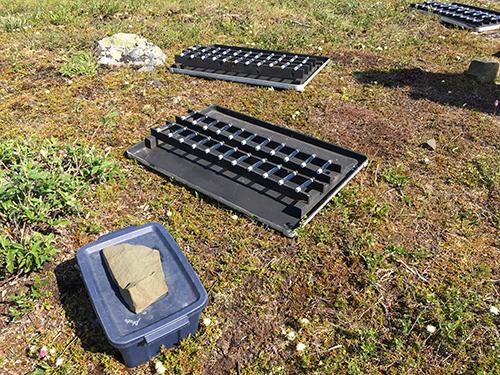 Photoexperiment science. Photo by DJ Kast
Photochemistry- Potential science experiment for teachers:
Photoexperiment science. Photo by DJ Kast
Photochemistry- Potential science experiment for teachers:
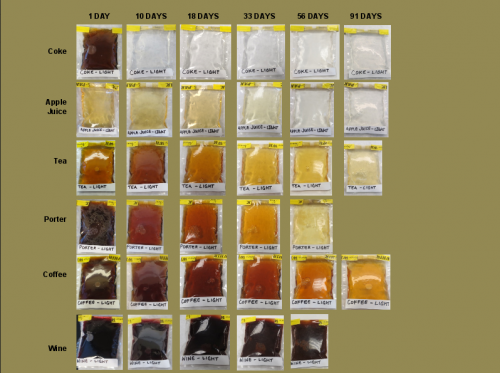 Array of different liquids and their bleaching over time. Photo by Jason Dobkowski
Array of different liquids and their bleaching over time. Photo by Jason Dobkowski
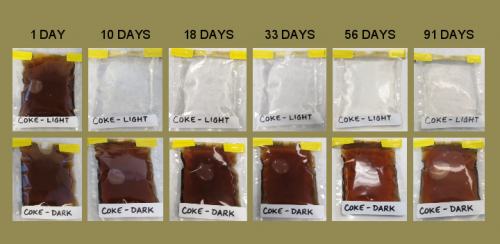 Coke in light and dark over time. Photo by Jason Dobkowski
Coke in light and dark over time. Photo by Jason Dobkowski

Comments